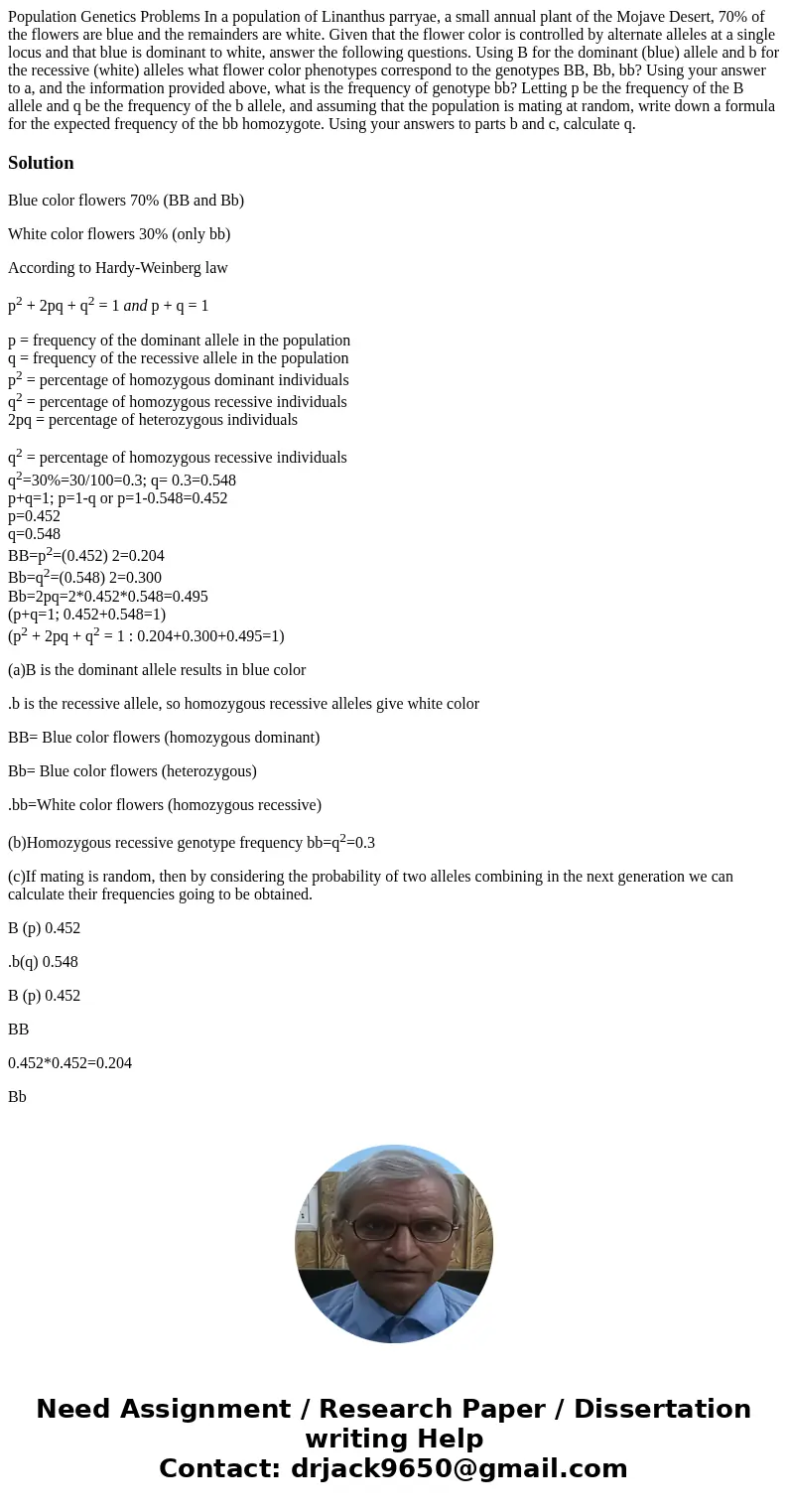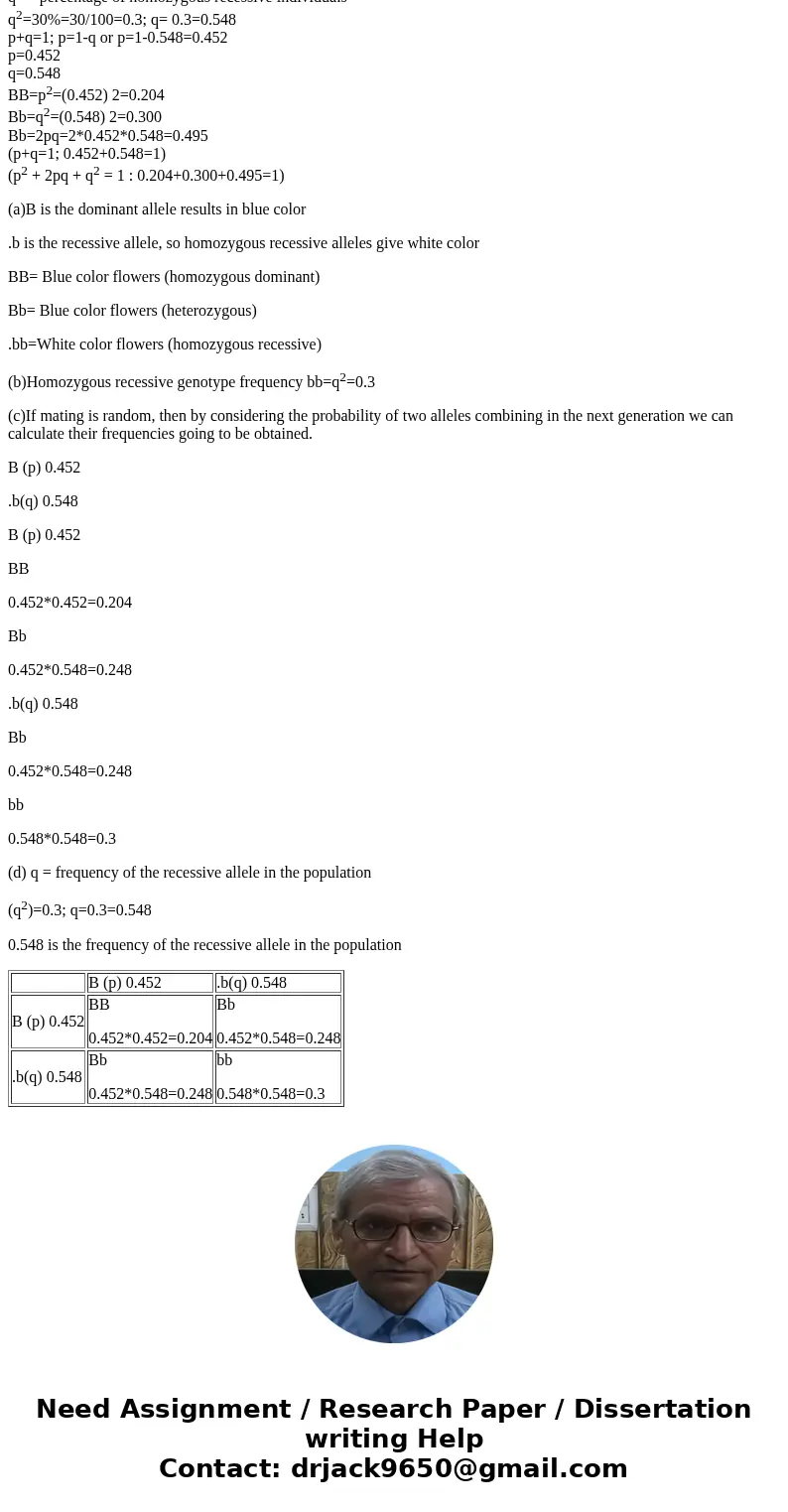Population Genetics Problems In a population of Linanthus pa
Solution
Blue color flowers 70% (BB and Bb)
White color flowers 30% (only bb)
According to Hardy-Weinberg law
p2 + 2pq + q2 = 1 and p + q = 1
p = frequency of the dominant allele in the population
q = frequency of the recessive allele in the population
p2 = percentage of homozygous dominant individuals
q2 = percentage of homozygous recessive individuals
2pq = percentage of heterozygous individuals
q2 = percentage of homozygous recessive individuals
q2=30%=30/100=0.3; q= 0.3=0.548
p+q=1; p=1-q or p=1-0.548=0.452
p=0.452
q=0.548
BB=p2=(0.452) 2=0.204
Bb=q2=(0.548) 2=0.300
Bb=2pq=2*0.452*0.548=0.495
(p+q=1; 0.452+0.548=1)
(p2 + 2pq + q2 = 1 : 0.204+0.300+0.495=1)
(a)B is the dominant allele results in blue color
.b is the recessive allele, so homozygous recessive alleles give white color
BB= Blue color flowers (homozygous dominant)
Bb= Blue color flowers (heterozygous)
.bb=White color flowers (homozygous recessive)
(b)Homozygous recessive genotype frequency bb=q2=0.3
(c)If mating is random, then by considering the probability of two alleles combining in the next generation we can calculate their frequencies going to be obtained.
B (p) 0.452
.b(q) 0.548
B (p) 0.452
BB
0.452*0.452=0.204
Bb
0.452*0.548=0.248
.b(q) 0.548
Bb
0.452*0.548=0.248
bb
0.548*0.548=0.3
(d) q = frequency of the recessive allele in the population
(q2)=0.3; q=0.3=0.548
0.548 is the frequency of the recessive allele in the population
| B (p) 0.452 | .b(q) 0.548 | |
| B (p) 0.452 | BB 0.452*0.452=0.204 | Bb 0.452*0.548=0.248 |
| .b(q) 0.548 | Bb 0.452*0.548=0.248 | bb 0.548*0.548=0.3 |


 Homework Sourse
Homework Sourse